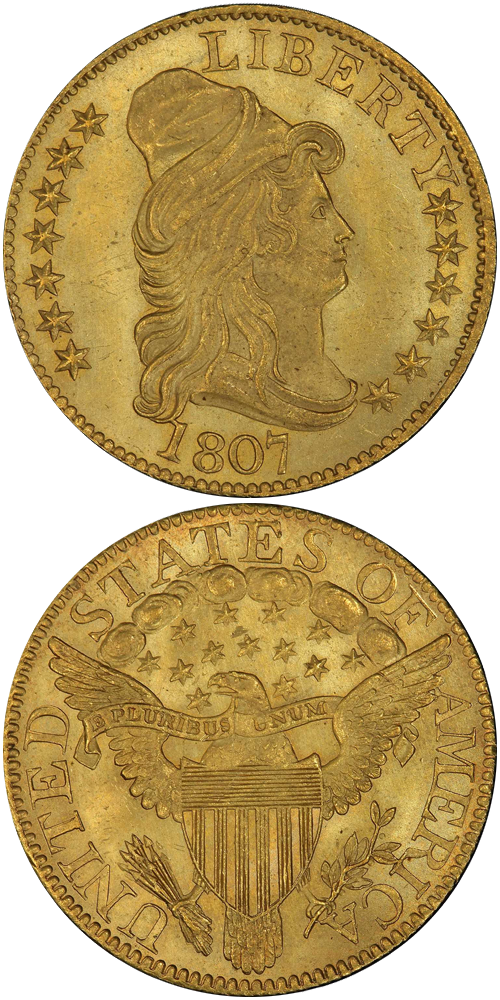1807 Capped Bust Right Half Eagle
President Jefferson's hope that smaller silver and gold denominations would not be exported in quantity caused the United States Mint to cease production of dollars and eagles after 1804. Neither would be struck for over three decades. Half eagles, which Jefferson hoped would be less tempting to export in large quantities, were paid out to large-scale depositors who formerly would have requested eagles. Mintages of half eagles ballooned. As many as 33,000 coins with the Draped Bust design may have been struck before this type was replaced mid-year by John Reich's Capped Bust portrait of Liberty. While that number may sound large in the context of early United States gold coins, the population of modern-day Philadelphia in the next census (1810) exceeded 87,000 people. Most Americans, then around 7 million in number, never encountered even a single half eagle over the course of the year 1807. Those that did, despite Jefferson's best wishes, hoarded them in bank vaults before they were eventually sold to brokers and exported as so much bullion. Few survived, fewer survived in gem condition.
The example to the left was sold by Stack's Bowers Galleries in the D. Brent Pogue Part II Auction, where it realized $235,000.






